This title is now available as a “Limited Edition” Blu-ray from Arrow Video.
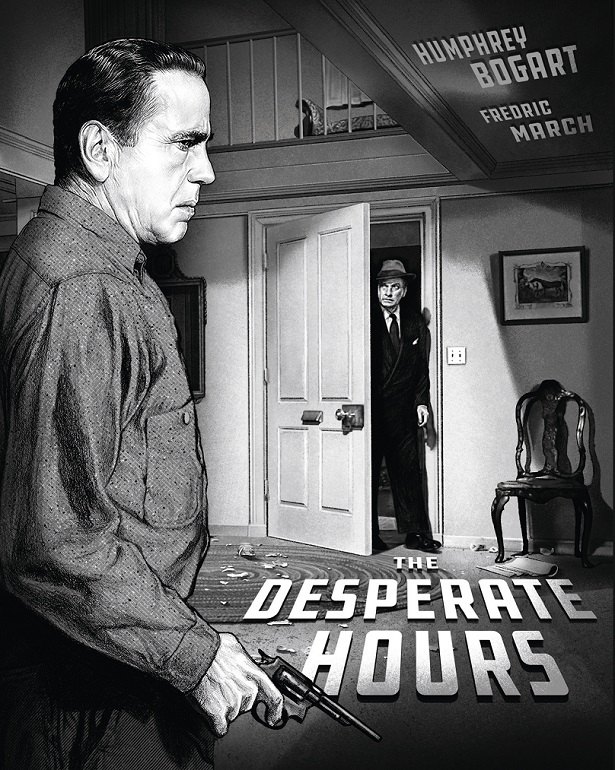
It’s funny, while the famous thriller The Desperate Hours is now considered a classic, it had a bumpy road to the screen and flopped during its original release. Thankfully, people have lauded the film in the ensuing years and now Arrow Video are helping to reestablish its legacy with a new “Limited Edition” Blu-ray. It features a 6K restoration of the original negative (which shot in the “VistaVision” large film format). As one might expect from the distributor, the movie looks better than ever and also comes with plenty of interesting bonus content.
Directed by William Wyler (Roman Holiday, The Big Country, Ben-Hur), this claustrophobic feature is noted for being an early example of the “home invasion” film and for having the famous star play the nasty villain. It’s a beautifully shot film that ratchets up the tension effectively, honing in on an average middle-class family house as its major location. There’s plenty of personal drama going on and some interesting themes being hinted at that help elevate the proceedings.
The tale is based on a hit novel that was released the year before and is set in a suburban neighborhood in Indianapolis, Indiana. It begins with escaped convict Glenn Griffith (Humphrey Bogart, in his penultimate film role), his young brother Hal (Dewey Martin), and cohort Sam Kobish (Robert Middleton) on the run from the law. They decide to hide out, enter a home and take the residents hostage while they wait for funds to arrive from Glenn’s girlfriend. The unfortunate hostages are husband Daniel Hillard (Fredric March), his wife Ellie (Martha Scott), teenage daughter Cindy (Mary Murphy) and young son Ralph (Richard Eyer). Initially, Daniel hopes that the package will arrive quickly and the gang will leave. But when nothing comes and hours pass into days, the family have to figure out how to inform police without endangering themselves. Of course, the authorities do finally catch on, but there is disagreement between cops as some seem predetermined to raid the house with guns blazing.
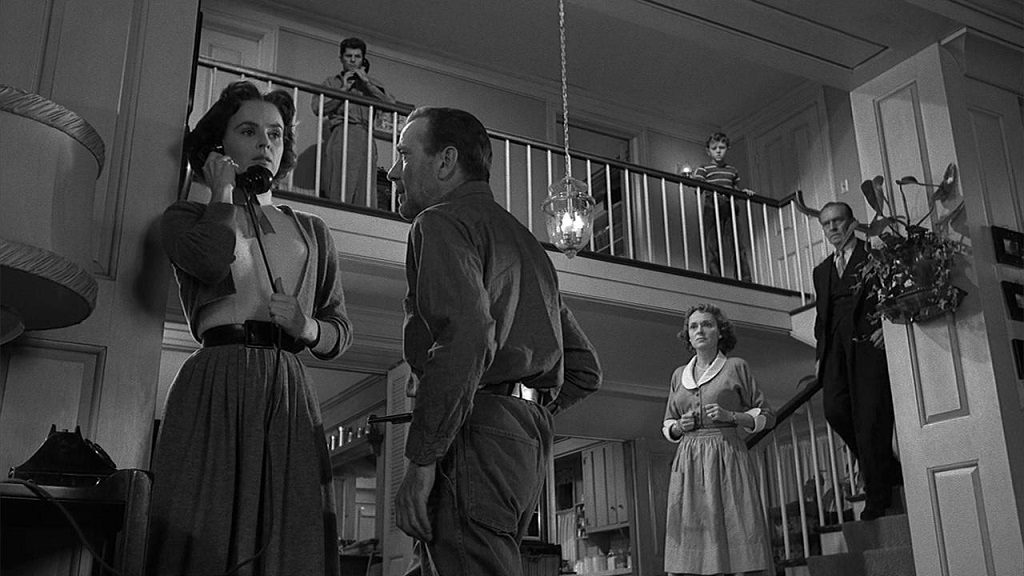
As mentioned, Wyler makes use of several tense situations as Daniel and Ellie try to keep their angry, panicked captors from lashing out. Teenage Cindy is something of a rebel at home, but her boldness causes danger when young Hal takes an interest in her. If that wasn’t enough for the family to contend with, blunt little Ralph is more than happy to give the convicts a piece of his mind. He idolizes his dad and has trouble understanding his pop’s fear and unwillingness to square off against the big foe.
Of course, we also witness criminals Glenn and Hal comment and ruminate over how well their hostages live. There’s even a moving scene early of Hal looking out the front window at night and watching suburban teens gather to go out and have some fun. It’s something that the character has never experienced and will likely never get the chance to participate in.
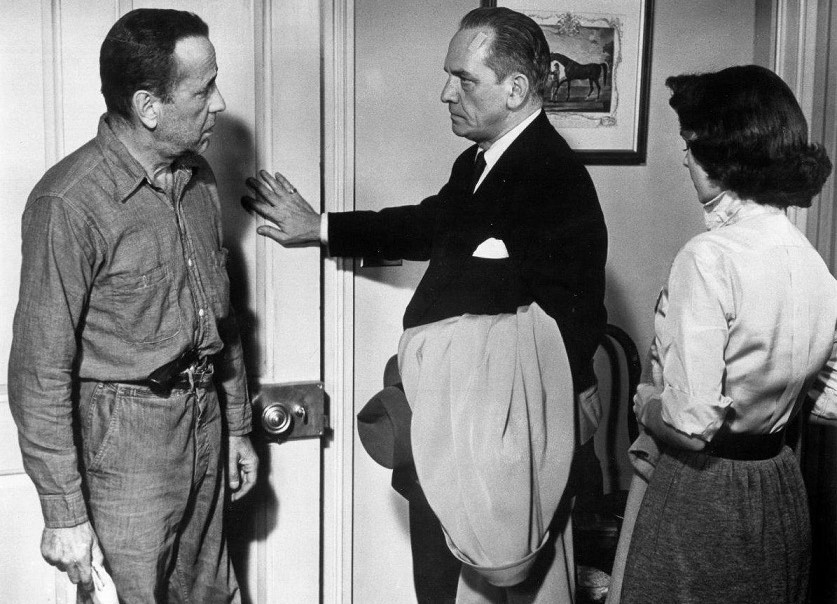
The homes and rooms are wonderfully shot in deep focus, with characters often placed in the foreground and background. There are many rooms visible through arches and doorways that subtly separate individuals into cell-like areas, as well as an open main hall with a second-floor banister and railing that remind viewers of prison bars.
The close quarters lead to numerous outbursts and arguments that eventually build into violence as the police close in. There are also some chilling moments as people stop by the house unaware of the situation within and find themselves being targeted.
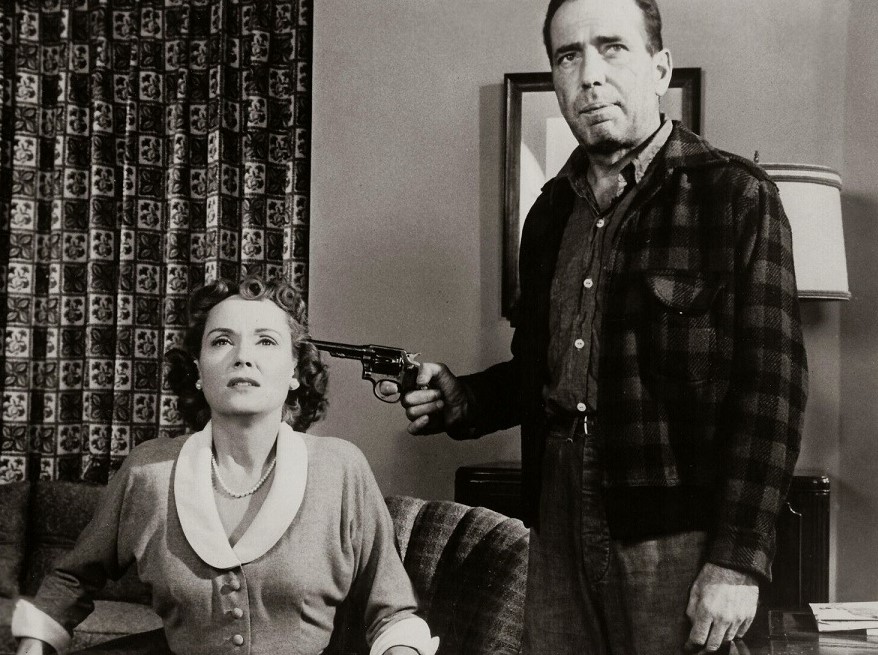
A picture like this could have been delivered in a straight-forward and predictable manner, but the impressive photography, detailed character work, little moments of introspection and excellent performances really make the picture stand out. Things do eventually close in a manner that doesn’t necessarily shock, but it’s all delivered with more care and interest than many pictures with similar concepts.
Even though the film is set within a small space, the camera delivers plenty of impressive shots, sometimes shooting from low angles on the actors so others can be seen on the second floor. It all looks incredibly well shot and beautifully lit. As the story progresses and events ramp up, dark and threatening shadows become more prominent and really add to the tension.
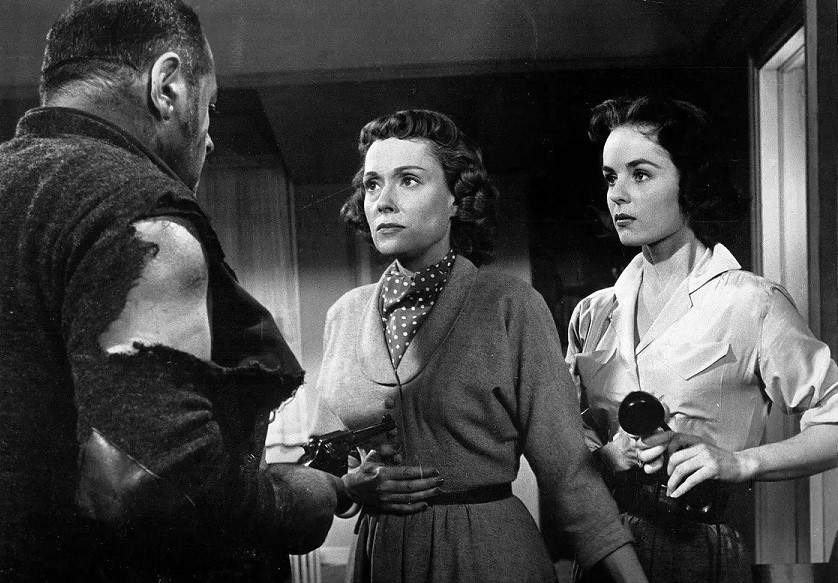
For those curious about the movie’s photography, “VistaVision” was a short-lived but interesting camera process for Paramount in which the negative ran through the camera horizontally instead of vertically. This set-up allowed for a larger film frame image, resulting in higher picture resolution (without resorting to anamorphic widescreen formats). It appeared to work quite well and this unique process was later adopted for formats like 70mm IMAX. So despite being nearly 70 years old, the picture on display looks remarkably clean and sharp.
Additionally, there are some wonderful extras. The film historian commentary is solid as always, presenting background information on the production as well as details about the cast and crew. Naturally, a lot of time is spent discussing Bogart and his relish in playing the film’s heavy, as well as the movie’s unfortunate and disappointing box office returns.
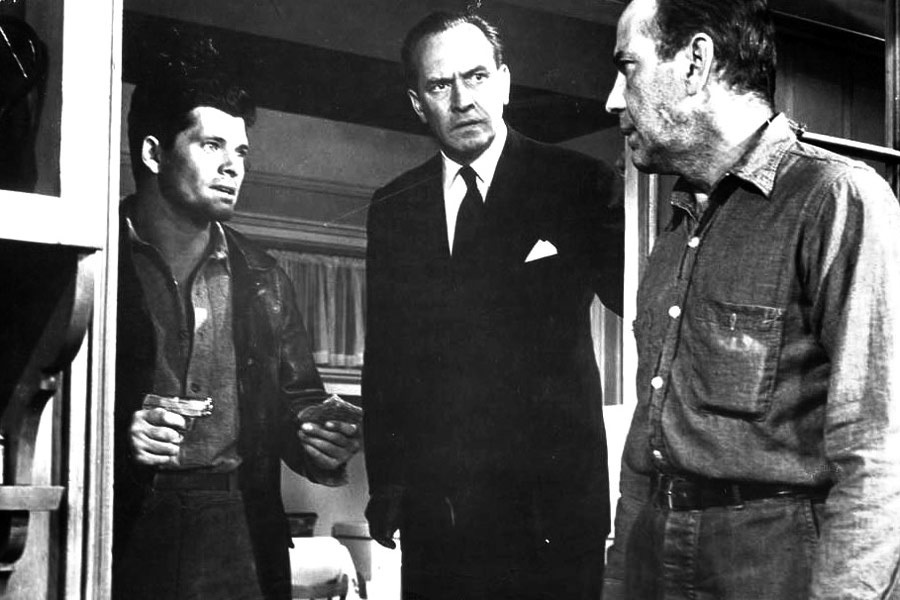
There is also a lengthy appreciation of the movie from José Arroyo, Associate Professor in Film and Television Studies at the University of Warwick. He does an excellent job of identifying the themes and ideas being presented, with a great emphasis on how the camera set-ups accomplish these goals. He goes into much greater detail on the angles and the effects they have on the viewer, as well as other tidbits. It is a very informative listen.
Additionally, there is a visual essay with a co-curator of the Melbourne Cinémathèque who focuses on the family dynamics of the era and some of the subtle power plays between characters. There’s also a great interview with Catherine Wyler, daughter of William Wyler. She talks about visiting the set as a child, and notes that the house did have an ominous overtone when she walked through it. Another interesting bit involves her talking about how quickly the movie disappeared from theaters, and that her father’s reaction about such a failure was simply to forget about it and move on to the next project. Wyler also notes another title or two from her dad that she thinks deserves attention and a revisit from movie historians.
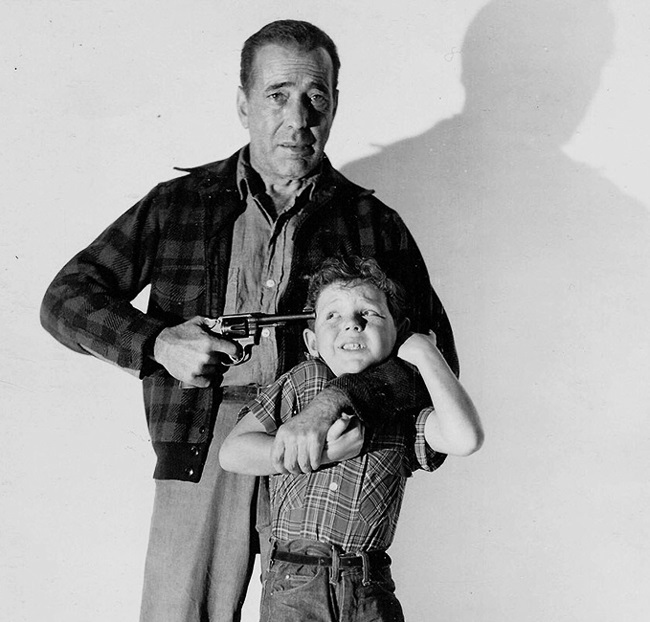
If that wasn’t enough, there are also some fun publicity materials like lobby cards and a trailer. The “Limited Edition” also contains an illustrated booklet with more essays on the movie.
The Desperate Hours is a real gem from a famed and talented director, alongside one of the greatest stars in motion picture history. This Blu-ray from Arrow Video has phenomenal image quality and great extras that will help viewers appreciate the picture even more. This disc is highly recommended to anyone who enjoys movie classics.


